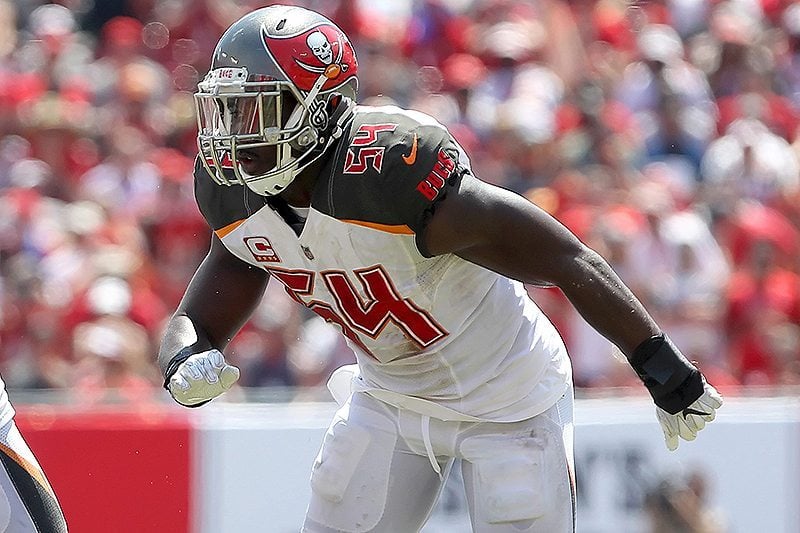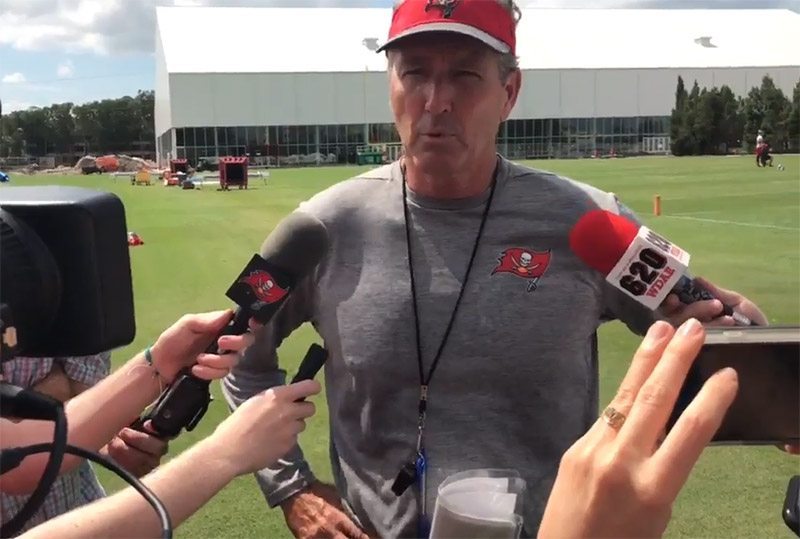FAB 3. Fixing The NFL
As a fan of the NFL since I was five years old, I’ll admit it. I prefer watching college football over watching NFL games.
Maybe it’s because I don’t have to work on Saturdays and can enjoy a beer (or two) while watching my Kansas State Wildcats and some of the biggest match-ups on TV. Maybe it’s because new stars emerge from the unknown every Saturday.
Maybe it’s because everyone loves a Cinderella story – an unexpected upstart that goes undefeated for most of the season and makes a push for a major bowl game or the College Football Playoffs. Maybe it’s because there are some amazing upsets that no one saw coming.
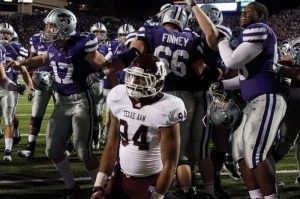
K-State beat Texas A&M in 4 OTs in 2011 – Photo by: GoPowercat.com
Maybe its seeing a 31-31 tie between K-State and Texas A&M at the end of regulation in 2011 turn into a 53-50 win in four thrilling overtimes. Maybe its because I have a better idea of what a catch is when watching college football.
As you’ve probably seen, TV ratings are down – again – at the start of the season.
Sunday Night Football’s compelling Atlanta vs. Green Bay game was down 8 percent in viewership from the previous year, which was a Green Bay vs. Minnesota game, and it was down 20 percent from last the Sunday Night Football season opener between Dallas and the New York Giants.
The Falcons vs. Packers game on NBC was the least watched Sunday Night Football game since 2008. Now 20.2 million viewers is still a lot of people, but it was down from 22.8 a year ago. Does it fall to 18 million next year, and then 16 million in 2019?
Don’t blame the Emmys on Sunday night, as ratings for that tired joke of a Hollywood show plummeted to the worst of all time.
Speaking of Hollywood, the two newest Los Angeles teams are really struggling to attract an audience.
In San Diego, the ratings for its former team, the Chargers, in their game against the Dolphins (in Los Angeles) was a 12.3, which was the lowest of any Chargers game dating back to 1998. That’s a 53 percent decrease from last year’s Week 2 Chargers game when the team was back in San Diego.
Los Angeles has failed to embrace the Chargers, and is only lukewarm in its interest when it comes to the Rams, who relocated there last year. The Chargers only drew 25,381 in attendance to last week’s game against the Washington Redskins at the L.A. Coliseum, which hosts the USC Trojans. That’s paltry – and embarrassing.
The Rams only drew 56,612 for their game against the Indianapolis Colts. The combined attendance of the Rams and Chargers game at the Coliseum was 81,993, while the attendance for the USC vs. Texas game at the same stadium was 84,714.
Tickets to the Rams vs. Colts game were selling for just $6 apiece.
LA attendance:
Chargers – 25,381
Rams – 56,612
NFL combined – 81,993USC v. Texas – 84,714
— Bryan Fischer (@BryanDFischer) September 17, 2017
While it wasn’t a sellout in Tampa Bay, the Bucs drew 56,640 for its season opener against Chicago, which was about 9,000 shy of its 65,890 capacity, despite not being in an area that is as densely populated as the city of L.A. is with its four million residents.
For those of you that argue that the NFL is still a massive leader over college football in ratings and popularity, the numbers support that claim. However, when NFL audiences for primetime games top 20 million on Sunday and Monday nights, there is only one NFL game on at that time with two out of the 32 teams playing and getting all of the attention from pro football fans.
In college football, the marquee games on Saturday night are plentiful on a wide array of networks. Here are the primetime ratings for the Week 2 college football games:
Oklahoma vs. Ohio State – 8.255 million viewers – ABC – 7:30pm ET
Georgia vs. Notre Dame – 4.088 million viewers – NBC – 7:30pm ET
Auburn vs. Clemson – 3.504 million viewers – ESPN – 7:00pm ET
Stanford vs. USC – 2.069 million viewers – FOX – 8:30pm ET
Boise State vs. Washington State – 1.265 million viewers – ESPN – 10:30pm ET
South Carolina vs. Missouri – 802,000 viewers – ESPN2 – 7:00pm ET
Utah vs. BYU – 668,000 viewers – ESPN2 – 10:20pm ET
Minnesota vs. Oregon State – 410,000 – FS1 – 10:00pm ET
Nicholls State vs. Texas A&M – 358,000 viewers – ESPNU – 7:00pm ET
Houston vs. Arizona – 242,000 – ESPNU – 10:30pm ET
Add up those numbers for those 10 college games that were on during primetime or started at the end of prime time on the West Coast and the collective audience is 21.91 million. That’s on par with NFL Sunday Night Football or Monday Night Football. Interest in college football is alive and well and the ratings aren’t down, so the game must be doing something right.
So why are TV ratings and attendance down in the NFL? Last year the league and its apologists blamed it on the presidential election. Or maybe it was Colin Kaepernick kneeling for the National Anthem that turned viewers away. That was a big factor in some fan polls.
This year it’s hurricanes that are blamed for declining viewership and interest. Or maybe its just some bad football with some bad quarterbacks on some teams, and a lack of compelling games. I feel a great swell of pity for anyone who had to watch the 13-9 snooze-fest between Houston and Cincinnati two weeks ago on Thursday Night Football.
Tickets for the most recent Thursday night game between the Rams and the San Francisco 49ers were going for as little as $14. The game turned out to be quite thrilling as the Rams prevailed 41-39, but it was far from a marquee match-up and I’m betting viewership wasn’t very robust.
When will the NFL realize it has an image problem?
Offenses are struggling to score points out of the gate due to poor quarterback and poor offensive line play. It’s one thing for a bad team like Buffalo to only have 30 points combined in its first two games, but the fact that Carolina – with Pro Bowl quarterback Cam Newton, wide receivers Kelvin Benjamin and , running backs Jonathan Stewart and Christian McCaffrey and Pro Bowl tight end Greg Olsen – to only have 32 combined points in the first two games is something else. Especially when the Panthers have only beaten the lowly 49ers and Bills.
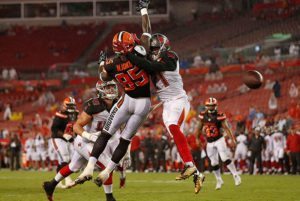
Bucs FS Justin Evans – Photo by: Mark Lomoglio/PR
Now points don’t always equal interest – otherwise the Arena Football League and the CFL would be thriving. But there is a lot of improvement that is needed to make the game of professional football great again.
I polled some of the Bucs players for their opinions to improve the game and have formulated my own ideas.
1. Review Targeting Calls
This was the one that got the most response from the Buccaneers in terms of a rule change. The current targeting call in the NFL comes with a 15-yard penalty, with fines upward of $100,000 and possible suspensions after the league reviews them and if a player is a repeat offender. Former Bucs safety Dashon Goldson was suspended for a game in 2013 after multiple targeting calls that season.
“I know they try to take care of the players these days with the head-to-head hits, but sometimes I think they get a little bit carried away – sometimes your helmet is going to hit another person’s helmet,” said Bucs rookie safety Justin Evans, who was flagged twice in the preseason game against the Browns and fined for one of his hits. “It’s football. I definitely agree with taking care of the receivers, and also us, but at the same time, there needs to be some leniency between that. If it’s a clear cut run through shot – if it’s just a catch-tackle, and your head hits his head, okay.”
What is Evans’ solution? Have the NFL adopt college football’s instant replay rule on targeting calls. When a college player is flagged for targeting the defender is ejected, but the instant replay official reviews the play in slow motion to determine if there indeed was intent or if perhaps the player led with his shoulder rather than his helmet.
“If they call a head-to-head targeting penalty, I feel like they should review it for the sake of reviewing it and maybe change it,” Evans said. “Maybe they will in the future, who knows?”
Fellow Bucs defensive back Robert McClain agrees.
“They don’t review it at all,” McClain said. “They just throw the flag. It could be a good hit, a clean hit, or it could not be. They would never know. They just throw off their first judgment. That would be big if they change that. They review everything else. They review the scores, why not view a hit that could possibly be a $50,000 fine for somebody? It’s also a lot of yards. Why not review something like that, that could take money out of your pocket, and also put the defense in a bad situation? That would be a nice change.”
Tampa Bay safety Chris Conte, who has been flagged and fined for targeting in the past, also likes the idea of making targeting calls subject to instant replay.
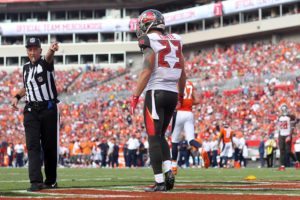
Bucs S Chris Conte – Photo by: Cliff Welch/PR
“Yes and no. One, you don’t want to slow the game down, but yeah I think some of the penalties for sure could be reviewed,” Conte said. “I think Justin had two of them in the preseason and one of them was questionable. All those guys make mistakes and you can’t be out there reviewing every penalty, but maybe there are some. Then it’s like, ‘are we going to start reviewing pass interference?’ It’s kind of a slippery slope. I agree that it would be nice if there were a quick way to do it. Maybe if there was an official off the field just watching those things and could be reviewing it right then and there and could just call down to the ref and let him know to pull the flag out. Something in place like that, that could be pretty quick, yeah maybe. It would be very cool. To have it be a timeout where they are going under the hood it takes time away from the game.
“As a safety, I know it’s all about player safety, but I think some of those hits are unfair to fine guys when they are not intentionally trying to hit somebody in the head. I think some of those rules are a little gray. If there was a way to clean that up, that would help me out a lot.”
Even wide receiver Adam Humphries is on board with the idea of challenging targeting calls at the NFL level.
“I’ve never thought about that, but that’s a good idea,” Humphries said. “Sometimes you see guys get thrown out of games for hits that aren’t malicious. Sometimes it isn’t fair and you know a $50,000 fine is coming as well.”
“In college that can cost you a national championship, too,” Bucs wide receiver Mike Evans chimed in.
“In college you get suspended for the rest of the game and the first half of the next game,” Humphries said. “That can cost you games, but obviously as a receiver I can’t complain too much about that because it protects me.”
“If you get thrown out in the first quarter of a game, it’s really a game and a half [suspension],” Evans added.
“I’d really like to see those reviewed, though,” Humphries said. “A big hit can look bad full speed but when you review it you see that it wasn’t malicious at all. It was just a tough call to make.”
2. Only use An Instant Replay Official
The NFL is making strides in this area in 2017 by having all instant replay video come from the NFL offices in New York rather than in the stadium. Instead of having the on-sight referee run over to a booth that resembles a peep show, the ref uses a tablet and looks at the screen for several minutes while we look at him and wait for him to make a call. What’s going to happen when the game is being played in a torrential downpour? I’m guessing that Microsoft Surface isn’t waterproof.
Here’s an idea. Have the NFL instant replay official in New York make all of the calls just like they do in college football – only its from an official up in the booth. It cuts down on time and takes away some of the potential bias of a ref not wanting to step on the toes of the officials in his officiating crew by overturning their calls.
“I agree with that,” Humphries said. “The quicker they can get replays going the better.”

Bucs head coach Dirk Koetter – Photo by: Cliff Welch/PR
Conte agreed with Humphries.
“I think there should be a referee where that’s just his job,” Conte said. “He’s the review guy and he tells him one way or the other.”
Some Buccaneers feel that more plays other than targeting calls should be subjected to instant replay. That’s an idea that New England head coach Bill Belichick has floated in years past.
“I like the CFL rules where you can get a challenge a game for a flag,” Evans said. “I think it’s one challenge. They can look at the penalty and decide. Or, like on the backside of plays at the end of the game, you can’t call holding on the backside. When you do that on fourth-and-1, it costs people games. Holding on the backside and the ball is not even going there. I guess that falls into the review. I would like one review per game.”
Bucs quarterback Ryan Fitzpatrick disagrees – outside of reviewing scoring plays.
“That’s a tough question,” Fitzpatrick said. “There are a lot of judgment calls that are tough. People are paid to make those judgments. Like I don’t think pass interference should be reviewable. The things they have going right now are good – I think they are trying to speed up the game as much as possible. Even the reviews, having them looking at touchdowns – I think that’s a good thing.”
With the NFL ramping up efforts to speed up the game, speeding up instant replay by not having to bother a ref to watch a tablet makes sense – even if it may occur more often if targeting plays are reviewed as several Buccaneers and I suggest they should be.
3. Use College Overtime Rules
The NFL likes its updated version of sudden death overtime model where the first team to score a touchdown wins, and if a team scores a field goal first, the other team gets a shot. The current belief is that the NFL frowns on using the college model because it could negatively affect the record book.
The college model gives each team a possession from the opponent 25-yard line. The team with the higher score after both teams had the ball in overtime wins. If the game is still tied it goes into another overtime with the same rules applying. After the third overtime teams are forced to go for two-point conversions.
In the four-overtime Wildcat win over the Aggies that I referenced earlier, both teams scored 31 points in regulation that included four touchdowns apiece. Yet by the time K-State won, both teams had added three more touchdowns in the overtime sessions with the Wildcats scoring on their two-point conversions and the Aggies missing theirs.
NFL records would fall left and right, as quarterbacks, running backs, wide receivers and tight ends would have the chance to rack up multiple touchdowns if their team went to overtime. Some NFL purists would suggest that would mess with the integrity of the record book. I say so what? College overtime is exciting as hell.
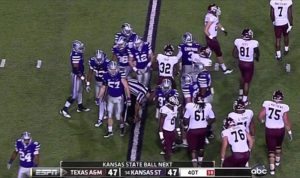
K-State beat Texas A&M in 4 OTs in 2011
“I always enjoy watching it as a viewer and I enjoyed playing in college overtime,” Humphries said. “It’s exciting. I think college overtimes are cool. You don’t have to go on a 90-yard or 80-yard drive to win the game. You get the ball at the 25-yard line and you try to go in from there. It’s a lot more fun.”
Well said, Adam.
And aside from the entertainment factor there is also the chance that the game ends much quicker with the college overtime system. If a team scores and the other team turns the ball over or misses a field goal, overtime can be over in a matter of minutes. Unlike the Bucs’ overtime game last year, which resulted in a loss to the Oakland Raiders.
Seth Roberts scored on a game-winning 41-yard pass with 1:36 left in the 15-minute overtime period to give Oakland the win. As a result, the Bucs played an extra 46 minutes and were dead tired against the Atlanta Falcons on Thursday Night Football in a 43-28 shellacking.
“Obviously if we had college overtime rules that would have helped,” Humphries said. “We played an extra quarter, which was about an extra 45 minutes or so out in the heat, and then we played Thursday night against Atlanta. Our bodies were dying.”
4. Eliminate Thursday Night Football
I was about to make the argument that the NFL’s Thursday Night Football games aren’t very entertaining because of the bad matchups that typically occur, such as the 13-9 Houston vs. Cincinnati game that featured very little offense. However, the latest Thursday Night Football contest between the Los Angeles Rams and the San Francisco 49ers, which was won by the visiting Rams, 41-39, was actually entertaining.
Nonetheless, Thursday Night Football is an owner-created product to have another primetime game, but it doesn’t take into consideration the health of the players. Giving players just three days of recovery time from a Sunday game is almost cruel given the physical demands of the sport.
“The biggest thing I would do as commissioner is just to make sure the players get what they need to recover,” Bucs defensive tackle Sealver Siliga. “Sixteen weeks is long, but when you make the playoffs, it’s even longer. A lot of players’ bodies start breaking down. I would just do more to help player safety and getting their bodies right throughout the week. Getting rid of the Thursday night games would help.
“Those Thursday nights are a quick turnaround. Especially when you play a physical game on Sunday that maybe goes to overtime, then you flip it right to a Thursday night game – that’s tough.”

Bucs CB Vernon Hargreaves and Falcons WR Julio Jones – Photo by: Getty Images
Humphries doesn’t mind the Thursday night games and actually likes them, but not necessarily for the exposure in prime time.
“I don’t mind the Thursday night game,” Humphries said. “For me I like the change in schedule. The repetition of always playing on Sundays can get old. I like the break we get after a Thursday night game. I like the Monday night games. It changes up your schedule a bit and keeps your mind from being too ritualistic. The change of the schedule is cool for me.”
Sorry, Adam. Thursday nights should be reserved for college football teams that have a roster of 100 players. It’s time the NFL looks out for the teams that only field 46 players.
5. Fix The Preseason
The typical NFL formula is to play starters one or two series in the first quarter and then go to the backups in the first preseason game. In the second exhibition game, the starters will typically play in the first half. In the third preseason game the starters usually see action into the third quarter, while they sit out the fourth preseason game altogether.
Preseason games are awful, and the fact that fans – especially season ticket holders – are charged full price for those exhibition contests is outrageous. Something has to be done because the on-field product from an entertainment perspective is awful. Whether it is drastically reducing the price for those preseason games – which the NFL owners won’t like because gate revenues is a major revenue stream – or eliminating a preseason game or two needs to be done regardless of whether or not the NFL eventually goes to 18 regular season games as a tradeoff or stays at the current 16-game schedule.
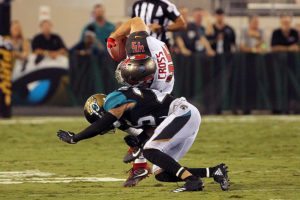
Bucs FB Alan Cross – Photo by: Cliff Welch/PR
“You know, I was a college coach for 23 years and then I came to the NFL, and preseason football is the weirdest thing because winning really isn’t the thing,” Bucs head coach Dirk Koetter said. “In amateur sports, high school and college, you don’t play any games where you’re not trying to win or winning isn’t the thing. And it’s just different. That’s all I can say. Not good or bad. It’s just different.”
The worst thing about the preseason is that the teams really don’t care about winning. It’s all about player evaluation and it’s typically only to determine the bottom dozen players on the roster and to get rookies and newcomers some game experience with their new teammates.
I’m not exactly sure what the best solution is when it comes to the preseason, but I know that it stinks and the league really needs to look into changing it. Fans don’t like it, the players don’t like it and neither do the coaches. If high schools and colleges don’t have preseason games, is it truly necessary? It’s time for the league to get creative and have more joint practices to evaluate talent rather than subjecting fans to really bad football, especially in the fourth preseason games when the stars sit.

